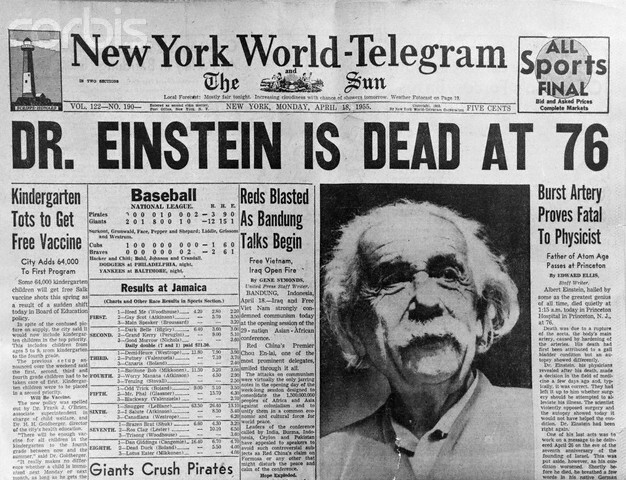Recent developments in the field of cosmology have thrown into question the conventional understanding of our universe. A recent paper in Nature Astronomy (Ref.1) asserts with 99% confidence that our universe is closed, while another paper (Ref.2) suggests extremely unfavorable odds against an open, flat, and infinite universe. These findings have severely shaken the foundations of the Standard Model of Cosmology (SMC), revealing significant flaws and limitations within it. Major cracks have appeared in the standard model of cosmology.
Eight critical shortcomings of the SMC have been identified (Ref.3A), each of which poses substantial challenges on its own. When considered collectively, these issues lead to the conclusion that cosmology is currently facing a crisis and requires a fundamental paradigm shift.
The field of physics itself rests upon two principal pillars: General Relativity (GR) and Quantum Mechanics (QM). However, these two pillars are known to be incompatible, resulting in an enduring conflict between the two most significant theories in physics (Ref.3B). This conflict is acknowledged by physicists themselves, highlighting that physics is also experiencing a crisis (Ref.3C).
Mr. Subhajit Waugh, a physicist at RRCAT, boldly suggests that the incompatibility between Quantum Mechanics and General Relativity may stem from an incorrect model of the universe (4A). He has put forward precise descriptions of the universe’s shape and size (Ref.4B), inviting scientists and experts in the field to examine his assertions (Ref.5, 6, 7). According to Mr. Waugh, adopting an ‘expanding (hyper) balloon’ model of the universe could lead to a unified framework for physics and cosmology, approaching the concept of a ‘theory of everything.’
The concept of an expanding universe gained traction through Edwin Hubble’s observation that galaxies move away from Earth at speeds proportional to their distance. This observation aligns with the analogy of an expanding balloon used to represent the universe. Mr. Waugh argues that this analogy was correct and should not have been discarded. He further suggests that the ‘wall’ of the balloon universe consists of invisible scalar fields and particles, analogous to invisible electric and magnetic fields. These particles are excitations within these fields, similar to the principles of Quantum Field Theory. Since all matter, including stars, planets, and humans, is composed of particles, everything exists within the 3D hypersurface of these fields. Mr. Waugh regrets that scientists did not recognise that the FLRW metric, foundational to the SMC, actually conveys this perspective of the universe. Both the temporal part of the FLRW metric and the Minkowski metric share similarities, implying that the 3D hypersurface moves at the speed of light in the fourth dimension. This aspect was largely overlooked in favor of the scale factor a(t), which corresponds to Hubble’s law. To clarify, Mr. Waugh employs the analogy of a party balloon: as it expands, two simultaneous phenomena occur—1) a point on the balloon’s wall moves away from its center along the radius, akin to the temporal part of the FLRW metric, and 2) nearby points on the balloon’s surface appear to move farther apart due to the balloon’s expansion, resulting in Hubble’s law. [Note: Using the radial expansion velocity of the universe as c and the universe’s age as 13.8 billion years, the value of the Hubble constant obtained through Waugh’s model closely aligns with accepted values measured by different methods.]
Mr. Waugh contends that one of the greatest errors in science is the concept of a four-dimensional ‘SpaceTime continuum’ (Ref.8), wherein three spatial dimensions and one temporal dimension are merged into a single 4D manifold known as SpaceTime. This concept leads to a ‘block universe’ view in which past, present, and future coexist simultaneously, contrary to everyday experience and numerous scientific observations. He argues that time is not an illusion and provides evidence to support this claim, emphasising that Einstein’s notion of timelessness is incorrect.
The root of this misunderstanding, according to Mr. Waugh, lies in an incomplete comprehension of imaginary numbers (Ref.9), particularly in the Minkowski-Einstein SpaceTime equation. He asserts that the equation is not representative of a 4D SpaceTime continuum but rather lacks a crucial dimension, causing confusion in physics and cosmology. He maintains that correcting these mathematical misconceptions will inevitably lead to a paradigm shift in science (Ref.10).
Mr. Waugh has outlined three key steps to challenge existing theories in physics and cosmology, offering testable and falsifiable predictions that could revolutionise the scientific landscape (Ref.11). He firmly believes that these steps have been satisfied and that a significant scientific revolution is imminent. The upcoming data from the Euclid telescope is expected to provide evidence supporting a positively curved, closed, and finite universe (Ref.12), further challenging established scientific concepts.
Mr. Waugh’s ‘expanding (hyper) balloon’ model of the universe seamlessly accommodates both General Relativity and Quantum Mechanics, potentially supplanting both theories and the Standard Model of Cosmology. However, it’s crucial to note that this model should be examined and scrutinised by the scientific community to assess its validity and impact (Watch video up to 10:56/16:23 for a concise explanation of the (hyper) balloon model of the universe).
In summary, recent developments in cosmology and physics have raised fundamental questions about our understanding of the universe. Mr. Subhajit Waugh’s unconventional ideas challenge existing theories, offering a new perspective that could reshape the foundations of both fields. Further research and evaluation by experts are needed to determine the validity and implications of these ideas.
References
1) Planck evidence for a closed Universe and a possible crisis for cosmology https://www.nature.com/articles/s41550-019-0906-9
2) Curvature tension: Evidence for a closed universe
https://journals.aps.org/prd/abstract/10.1103/PhysRevD.103.L041301
3A) A candid assessment of standard cosmology
https://iopscience.iop.org/article/10.1088/1538-3873/aca51f/meta
3B) Relativity versus quantum mechanics: the battle for the universe
https://www.theguardian.com/news/2015/nov/04/relativity-quantum-mechanics-universe-physicists
3C) World’s largest physics conference in Las Vegas will be grand; but will it be worthwhile?
4A) RRCAT Physicist Proposes New Theory Unifying General Relativity and Quantum Mechanics
4B) We are wrong about the shape and size of our universe: RRCAT Physicist provides a new model of universe.
5) Shape and size of our universe: challenging the Standard Model of Cosmology https://www.researchgate.net/publication/371487379_Shape_and_size_of_our_universe_challenging_the_Standard_Model_of_Cosmology
6) Quantum Mechanics and General Relativity are compatible, and have a common origin: the expanding (hyper) balloon universe
7) Is everything we know about the shape and size of our universe, and how it works, wrong?
https://doi.org/10.5281/zenodo.7343171
8) The biggest mistake in Science: Space and Time do not fuse into SpaceTime continuum.
9) RRCAT Physicist Claims Correct Representation of Imaginary Numbers May Unify General Relativity and Quantum Mechanics
https://finance.yahoo.com/news/rrcat-physicist-claims-correct-representation-202518538.html
10) Science is standing on shaky mathematical pillars, which guarantees a scientific revolution
11) Scientist Mr. Subhajit Waugh Makes Testable and Falsifiable Predictions that Could Shake up Science to the Core
12) Euclid telescope will revolutionize science, overthrow ruling scientific theories, and usher paradigm shift in science.

